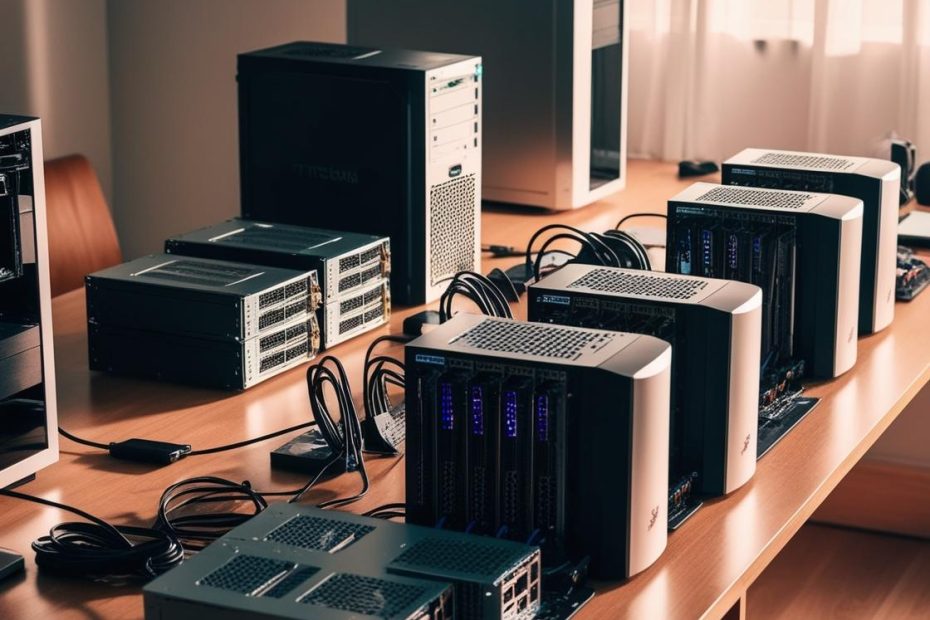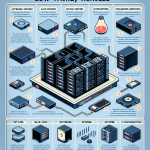Embracing the Homelab Journey
I remember the exhilarating feeling I had when I first decided to build my homelab. It was a wild mix of curiosity and excitement, like setting out on an uncharted adventure, except this one involved servers instead of treasure maps. The moment I realized I could create a little corner of the world where I could test new applications and learn at my own pace, I was hooked. Today, I want to take you along on this adventure, sharing what I’ve learned and how you can embark on your own homelab journey.
Why a Homelab? The Joy of Experimentation
You might be wondering, why bother with a homelab? For me, it’s the sheer joy of experimentation. There’s something beautiful about having the freedom to tinker with systems, explore new software, and try out various configurations without the fear of breaking anything critical. I often think of my homelab as a playground for my tech passions. Here are a few reasons why I love it:
- Endless Learning Opportunities: Every new application I try or system I build teaches me something new. Whether it’s understanding Docker containers or managing virtualization, I’m continually growing.
- Real-World Application: I can simulate production environments, which helps me understand how things work in the real world. It’s like having a mini data center where I can practice my skills.
- Cost-Effective Testing: Instead of risking production systems, I can test new applications in my homelab without any worries.
Getting Started: Building Your Homelab
The initial step in this journey was perhaps the most daunting. Where do I even begin? A great starting point is to evaluate what you want your homelab to achieve. Is it just for personal projects, or are you looking to build a skillset that may eventually cater to your career advancement?
**For me**, it started small. I purchased an old server off Craigslist, not knowing at the time how much joy it would bring me. Setting it up with a clean install of Ubuntu felt like launching a rocket into space. I was both nervous and excited. *“What if I mess it up? What if I can’t figure it out?”* But those thoughts quickly faded as I dove in.
Choosing the Right Hardware
When considering hardware for your homelab, think about the following:
- Purpose: What do you want to accomplish? Running lightweight applications might only require an old laptop, but for virtualization, you may need something more robust.
- Budget: You don’t need to break the bank! I spent less than $300 initially and was amazed at what I could do.
- Scalability: Consider if your needs will grow. You may want to invest in hardware that can expand as your homelab evolves.
I found that I enjoyed working with a combination of physical servers and virtual machines. This dual setup allowed me to explore different facets of virtualization, breaking barriers I previously thought were insurmountable.
Software: Where the Magic Happens
Now, let’s talk about software. The sheer variety of applications available is off the charts, which can be both a blessing and a curse. It’s easy to get lost amidst the options. Here are some essential types of software I recommend starting with:
- Operating Systems: Ubuntu Server, CentOS, and FreeBSD are all excellent choices for your base OS. I started with Ubuntu, and it felt user-friendly while still being powerful.
- Virtualization Platforms: VirtualBox, VMware, and Proxmox have all been my go-to platforms for running multiple virtual machines. Having a virtual environment lets you experiment fearlessly.
- Automation Tools: Tools like Ansible or Terraform help in deploying and managing configurations easily. Once I discovered how much they could speed up my workflows, I was hooked.
I’ve found numerous resources online that have guided me along the way. If you want to delve deeper into getting started, I recommend these:
– TechRepublic’s Homelab Guide
– Raspberry Pi Foundation’s Homelab Documentation
Tinkering and Troubleshooting
Once I had the hardware and software installed, the real fun began—tinkering! This phase has its own set of challenges, and I can’t stress enough how important it is to embrace those nosedives into troubleshooting.
Every error message felt like a friendly nudge saying, *”Here’s another opportunity for learning!”* The problems I faced ranged from simple syntax errors in code to more complicated networking issues, and each time, I learned to dissect the problems systematically.
**What I’ve learned:** Patience is key. Whether it’s figuring out why a VM won’t boot or diagnosing network issues, taking a breath and revisiting the problem often yielded new solutions. Community forums, like those on Reddit and Stack Overflow, proved invaluable, showing me the importance of reaching out to others when I hit a wall.
The Community: A Supportive Network
Speaking of community, connecting with fellow tech enthusiasts has been one of the most fulfilling aspects of my homelab experience. Many people are kind enough to share their knowledge, offering insights and assistance that have saved me countless hours of frustration.
Joining local tech meetups or online communities has helped me forge friendships and learn about projects beyond my own. I’ve enjoyed attending online webinars and following blogs where others document their journeys—encouraging me to step outside my comfort zone. If you’re looking for community resources, consider joining Discord servers or following hashtags on Twitter that align with your interests.
Where to Now?
As I continue to explore my homelab, the possibilities seem endless. I find myself dreaming up new projects, whether it’s setting up a personal cloud, exploring machine learning, or even experimenting with IoT devices. The biggest lesson so far has been that this journey is as much about the destination as it is about the experiences along the way.
*“The learning never stops.”* This mantra continues to push me to delve into technologies that seem daunting at first. I invite you to ignite that spark within yourself! Build your homelab, experiment, and share your discoveries.
If you’ve embarked on this journey or are considering it, I’d love to hear your thoughts or experiences. Please feel free to leave a comment; your voice is incredibly valuable in this vibrant community!



